My Best Tips for Decorating Small Spaces
Decorating small spaces is one of those things that can feel nearly impossible at first. But read on for some genius solutions!
I actually enjoy small space decorating! I think the challenge of it is exciting, and along the way I’ve learned the following tips and tricks I’m glad to get to share with you!
And before we begin, know that those of you with large spaces aren’t left out, there’s something for everyone!
What you need to do is the exact opposite of what I share here and you’ll be pretty well set in your larger space!
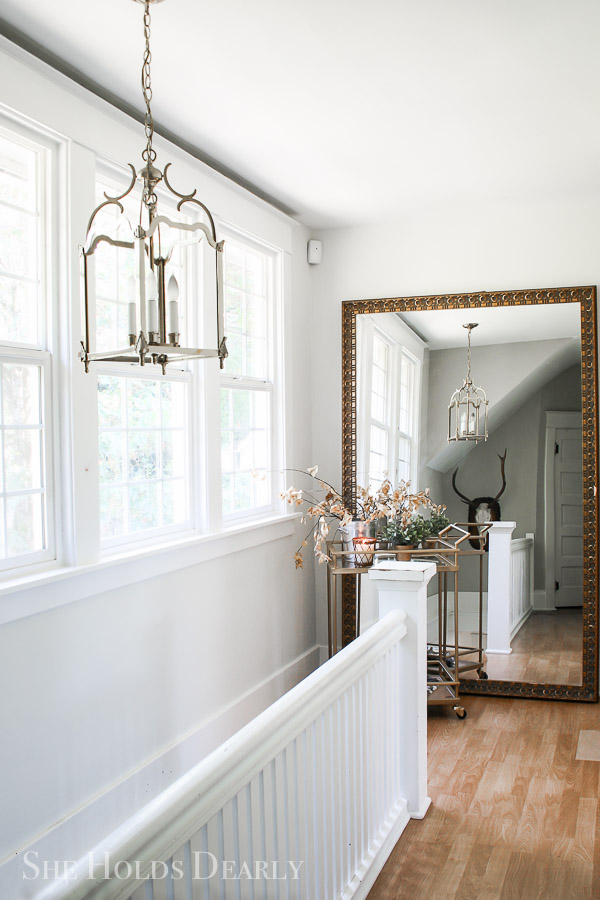
*This post contains affiliate links to products I know &/or love.
Small Space Decorating
Let’s get started!
Floors:
With your floors, you want to do what you can to avoid breaking them up into smaller sections, which means:
- No area rugs
- No different types of flooring
Area rugs are good at their job of zoning a room and creating foundational areas (both of which are good things if you have a large space, hint hint people with large spaces!).
But in an already small area, chopping it up into smaller pieces makes it feel smaller.
Having a single type of flooring that seamlessly transitions from room to room without area rugs will make the area feel bigger!
Walls:
The concept for making walls feel bigger is similar to what I shared about floors. You want to keep things the same wherever possible.
So instead of having walls and trim and doors a different color, you want to pick a color you love, and paint them the same.
Then pick something you want to be your focal piece. Something like a chandelier or a great piece of art of the wall.
Have that be your focus, and your other elements will blend together making the space appear bigger.
When thinking about focal points, if they aren’t hung (like a chandelier), I recommend keeping them pretty flat. Something like a piece of art, or a large mirror leaned against a wall.
Mirrors are actually great because they can be not just your focal point, but their reflection also causes the optical illusion that you have twice as much space.
This mirror from Ballard Designs is one I’ve had my eye on for a while!
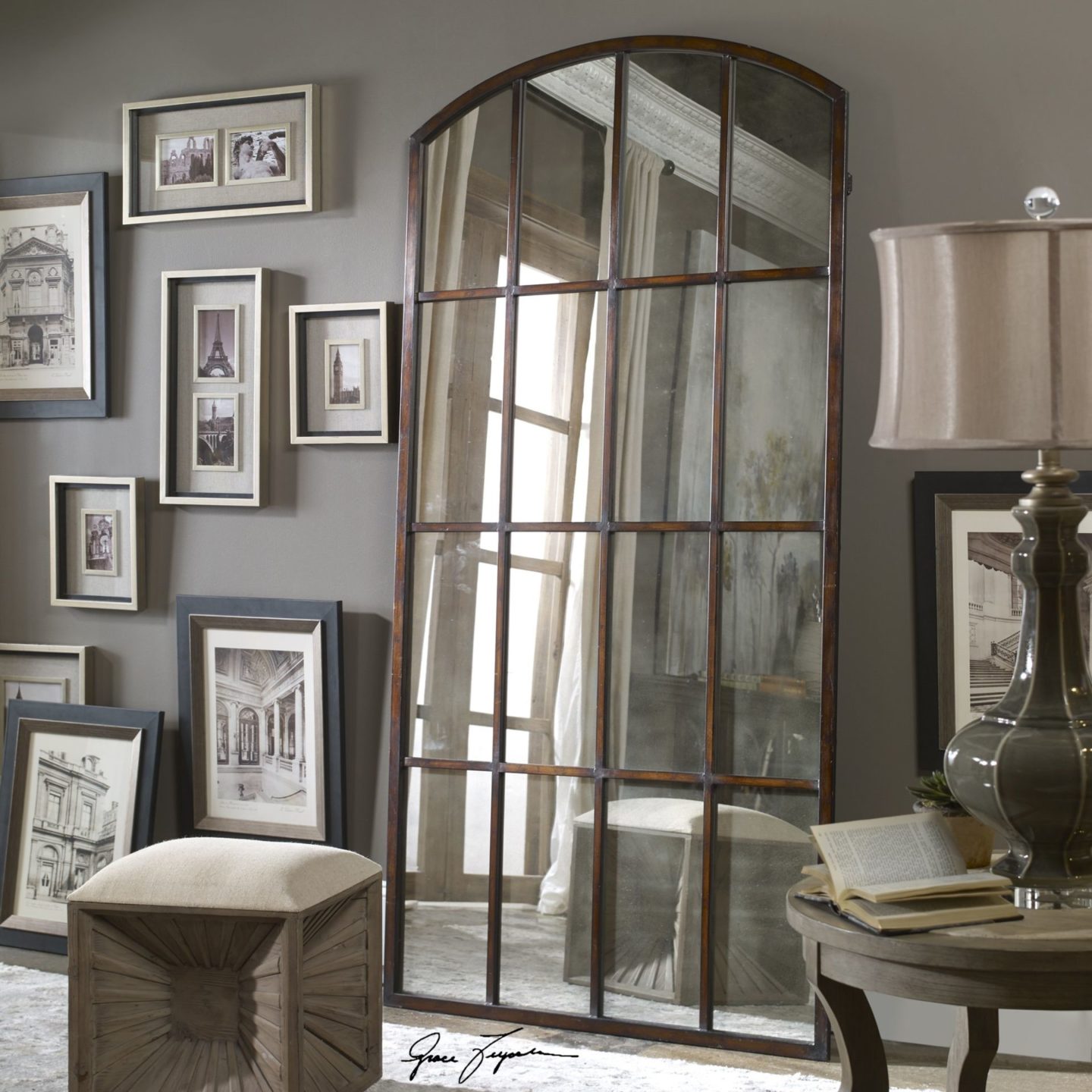
The mirror near the beginning of the blog is also from Ballard Designs, and is one we have in our upstairs landing. The story behind it is a funny one, too. Scroll about 1/2 way down the Full Farmhouse Tour post if you’re curious!
Furniture:
I’m going to break this section down into sub-sections, which will hopefully be more useful!
Beds:
In most cases, you’ll want to forget about a king size bed if you’re working with a small space! Go for a queen if needed!
I’d also suggest skipping the headboard and footboard unless you find something like a wrought iron bed that allows you to have both air and light flow.
| Key Tip: In all that you do, be mindful of air and light flow and protect them wherever possible! |
You can also look for platform beds that don’t require the use of a box spring, which makes your bed lower to the ground and less imposing.
These wooden options from Urban Outfitters are so dreamy (pun intended!). I think both the simple wood look, and the carved option are both so timeless and elegant!

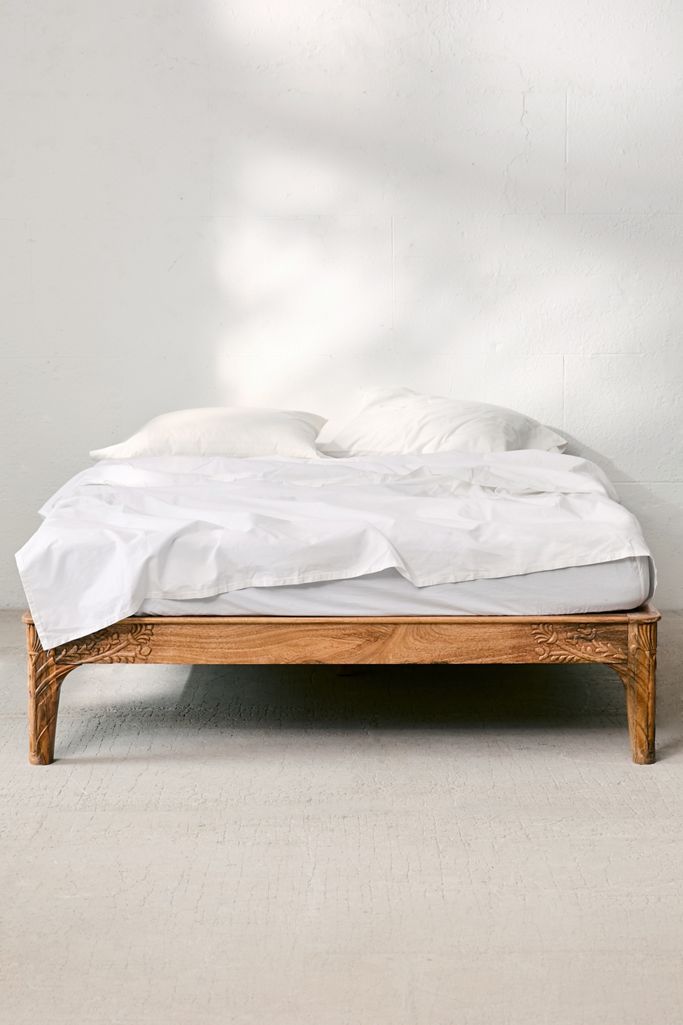
If working with children/teenager rooms, I’d recommend just a twin bed, or even one of the less common options like:
- Futons & Sofa Beds
- Trundle Beds
- Hide-a-Beds
- Murphy Beds
There are actually some really neat tutorials out there for DIY murphy beds, like this one from Cool Creativity.
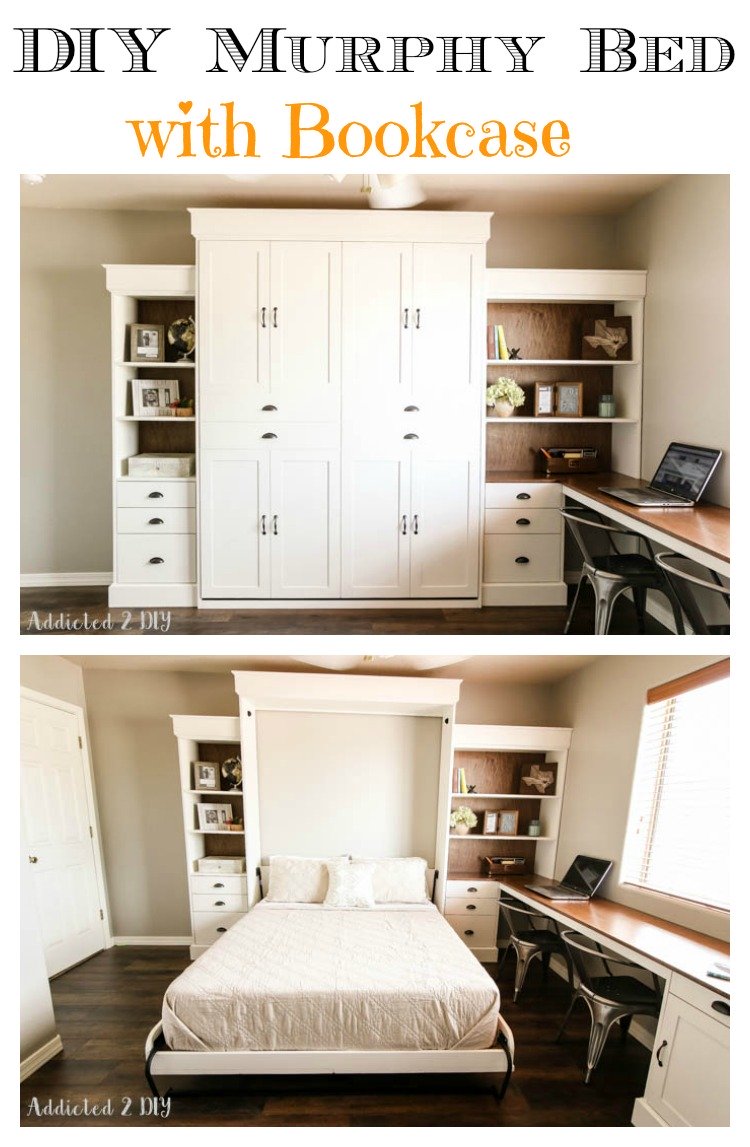
Night Stands:
In a similar vein as the no headboard or footboard rule, when you’re working with nightstands you want to allow as little bulk as possible.
|Key Tip: Examine all items within your space and eliminate all unnecessary mass! |
A Floating shelf like this one here used as a nightstand is a really great option!
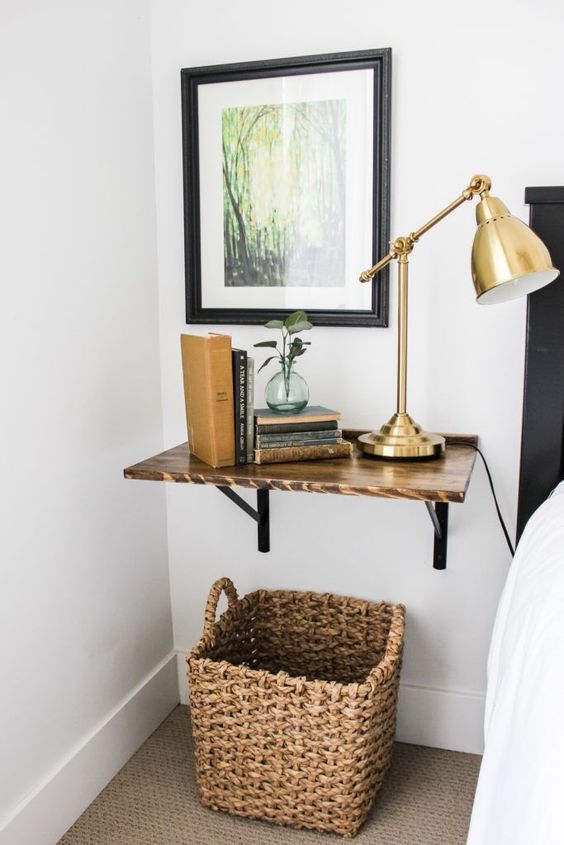
Or you can use nesting tables that can be spread apart when you need more space, and tucked back together when you’re finished.

I share a little bit more about how an “open” nightstand helps make the space feel bigger in my post about Mismatching Nightstands.
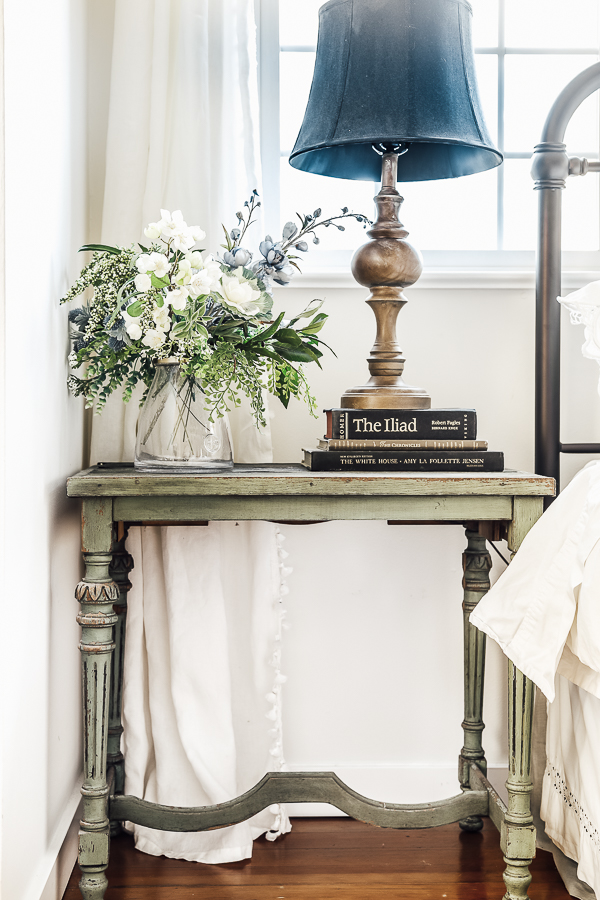
Desks:
It’ll come as no surprise to you that desks follow similar rules as some of the other items we’ve talked about.
You want to avoid heavy pieces (not physically), but pieces that have built in drawers and bulk.
Something like this bar desk that we made for our Son’s teenage boy bedroom would work well in plenty of small spaces, especially since you can customize the size of the desk!
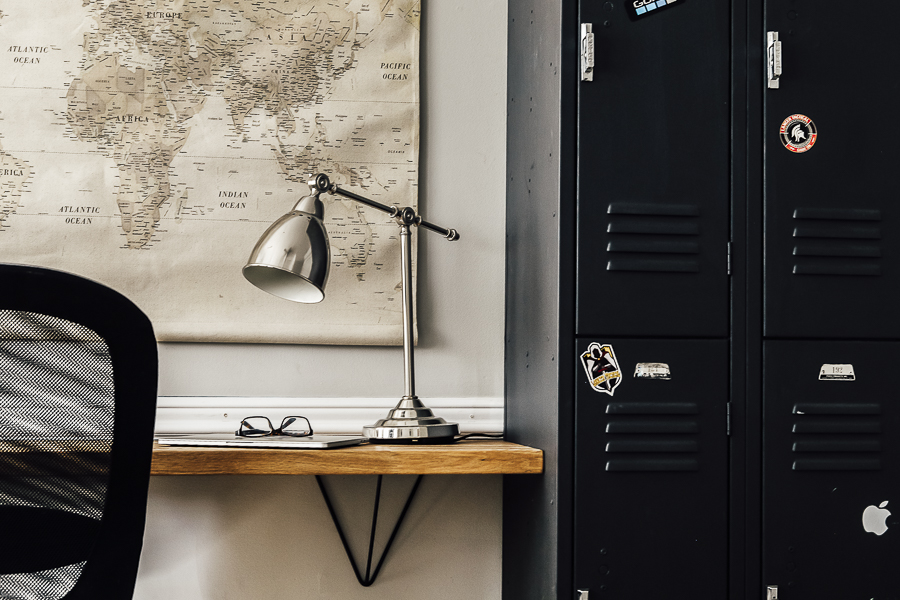
Other desk ideas are to find the older school desk & chair combos.
Or convert an armoire or closet into an office with desk space.
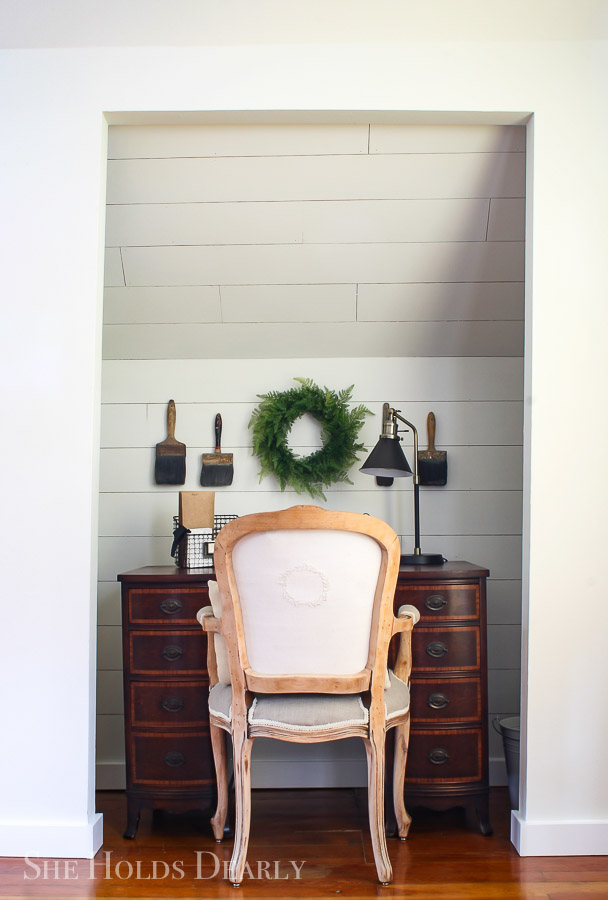
Tables:
Tables are also very similar, (since they’re basically just like desks with different functions) think glass tops, skinny legs. Nothing big or ornate that carries extra unnecessary mass.
Chairs:
For chairs, I’d use something like an acrylic chair where possible – because they’re completely see through (except for the legs), they can actually blend in pretty well, even with vintage decor!
I also say to skip chairs with arms!
Think of things more like this Vintage Slipper Chair for accents…
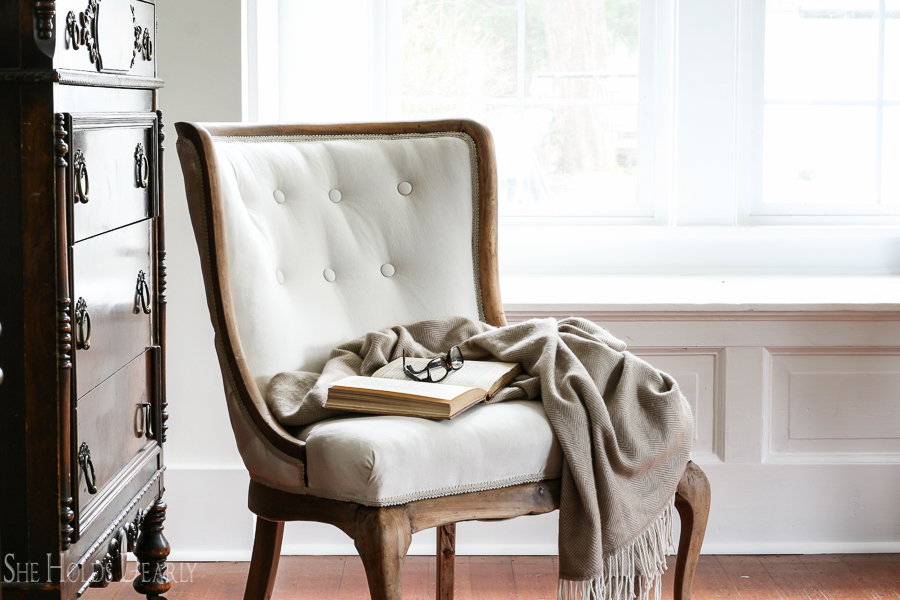
Or Parsons chairs (with slip covers) for dining rooms.

Couches:
Look for couches that have tight and simple streamlined designs, not ones that are full with big puffy cushions.
Check that they have lower profile arms.
And don’t rule out sectionals! Because they don’t waste corner space, they can actually be a great investment in a small place to maximize comfortable seating!
This one from CB2 is a great option.
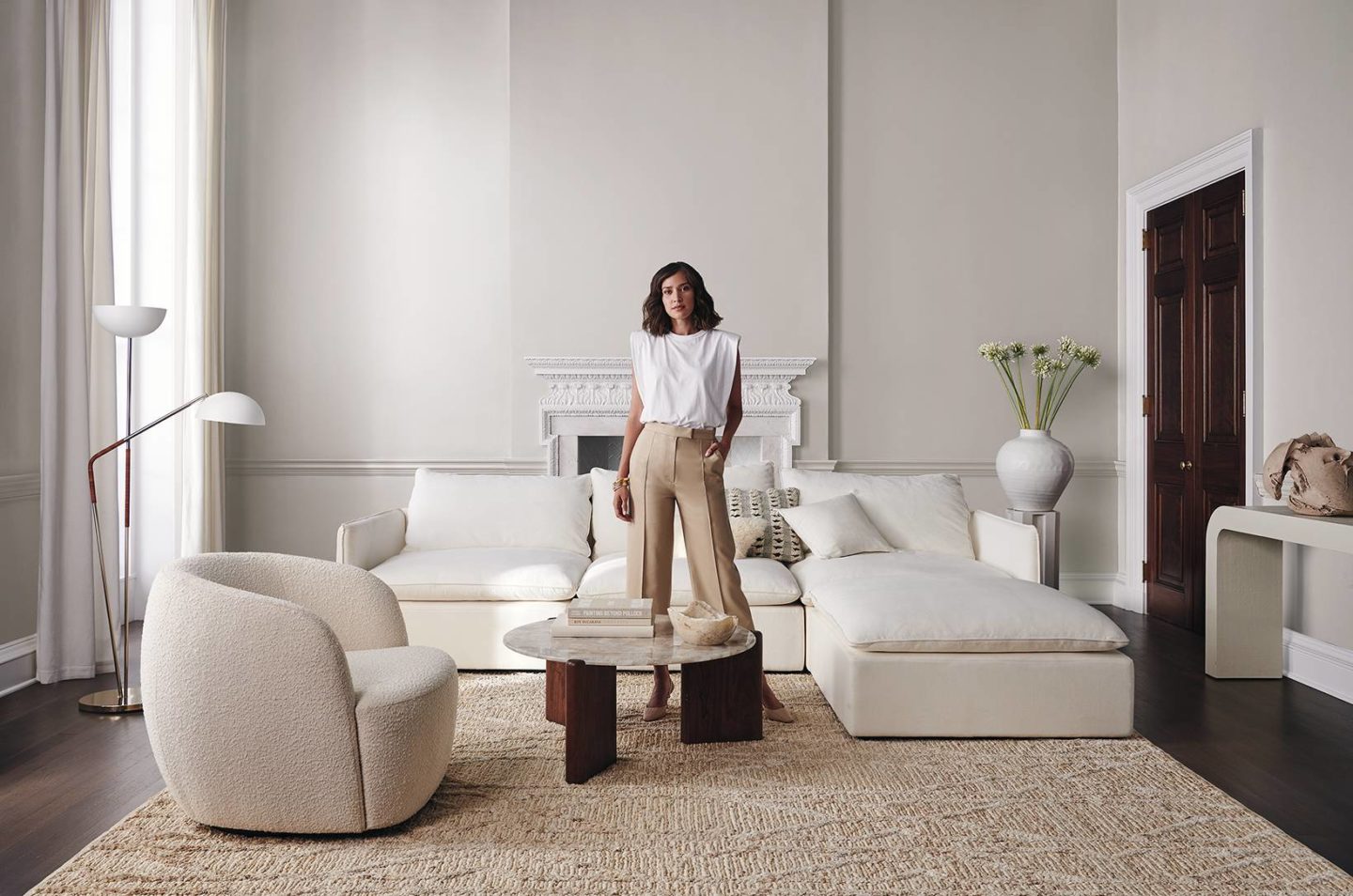
CB2 as a company is actually realizing how the market for small house furniture is growing! They have their own small house furniture line, and so does West Elm!
Lighting:
When planning your lighting, avoid floor or table lamps that take up valuable space.
Opt for hanging lights or sconces that don’t take up any flat surface space!
Avoid regular lampshades whenever possible, and instead use things like Edison bulbs (for lamps that can be exposed), or something like glass lampshades that help maximize your light output.
Storage:
Oh, how I know that storage can be a big problem in small spaces!
Consider these options:
| Things that can be pulled out when needed and otherwise stored away. For instance, a cart like this one from IKEA where you can easily tuck it away in a corner or closet when not in use.
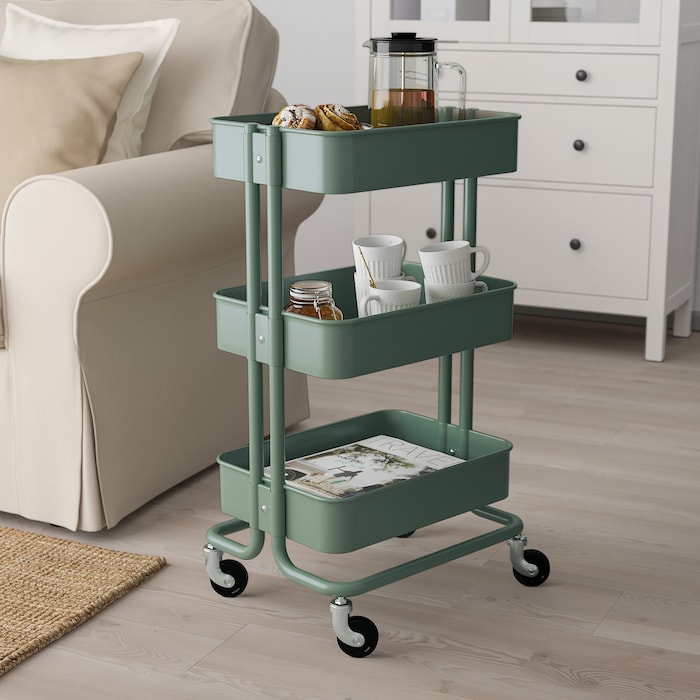
| Open Shelving – Now this one is kind of a two edged sword. On the one hand, it follows the rule of keeping things open and airy – great!
But at the same time, it can very easily become cluttered and messy looking.
In this case, I’d remind you to be very mindful and strategic in your storage pieces. Keep them uniform and put away in neat rows. They’ll help hide the multitudes of different colors and non-decorative elements that you need space for.
Wire baskets are also great for the open and airy idea – but you need to consider what you’ll put inside and if it will look nice put away.
Think outside the Box:
Sometimes what we’ve always used something for, or think we should use it for can actually be repurposed to give us a more functional space.
An example of this is years ago before we bought our farmhouse, we lived in a smaller house and I homeschooled my 3 at the time young children in our kitchen.
The struggle with that is needing to transform the area each morning into school space, and then tear it back down again at the end of the day when we ate dinner.
After a while I came up with an idea to move our actual extra food storage out to our garage, and I converted our pantry into a hub for homeschooling.
Our supplies were inside, as well as organized plastic drawers, our games, etc. It was packed tight!
I even added cute number and letter charts and maps on the inside of the pantry door so that we could utilize all the available space.
Another way I’ve been known to give myself more functional storage is to add a fabric shoe holder over the back of a given door. It can be used for bathroom toiletries, homeschool supplies, shoes (of course) and much much more!
Re-think your Spaces:
I’ve been really inspired about the functionality of small spaces, and how to decorate them by different families who have used their skills to create either made over RVs or tiny homes.
One of these was my friend Cami from the blog Tidbits who made their RV into a gorgeous functional family space.

Another thing I’m loving are convertible spaces. Similar to how a murphy bed folds up to look like shelving, there are things like this really cute table that folds down and includes shelf space, and then folds back up into a blackboard when not in use.
So clever, right?

|Key Tip : Take advantage of convertible spaces whenever possible. |
The more you can find and utilize these convertible type spaces, the better off you’ll be!
Decluttering is an Important Aspect of Decorating Small Spaces:
Now no small space blog can go by without a mention of one of the most important aspects of small space decorating: Decluttering!
Having less things in a small space will make it so much easier to clean and store and maintain!
Check out my decluttering flowchart for more information!
I’d love to hear about your small space decorating successes! What have you found that works, and what would you not do the same way again?
Pin These Tips for Decorating Small Spaces for Later:
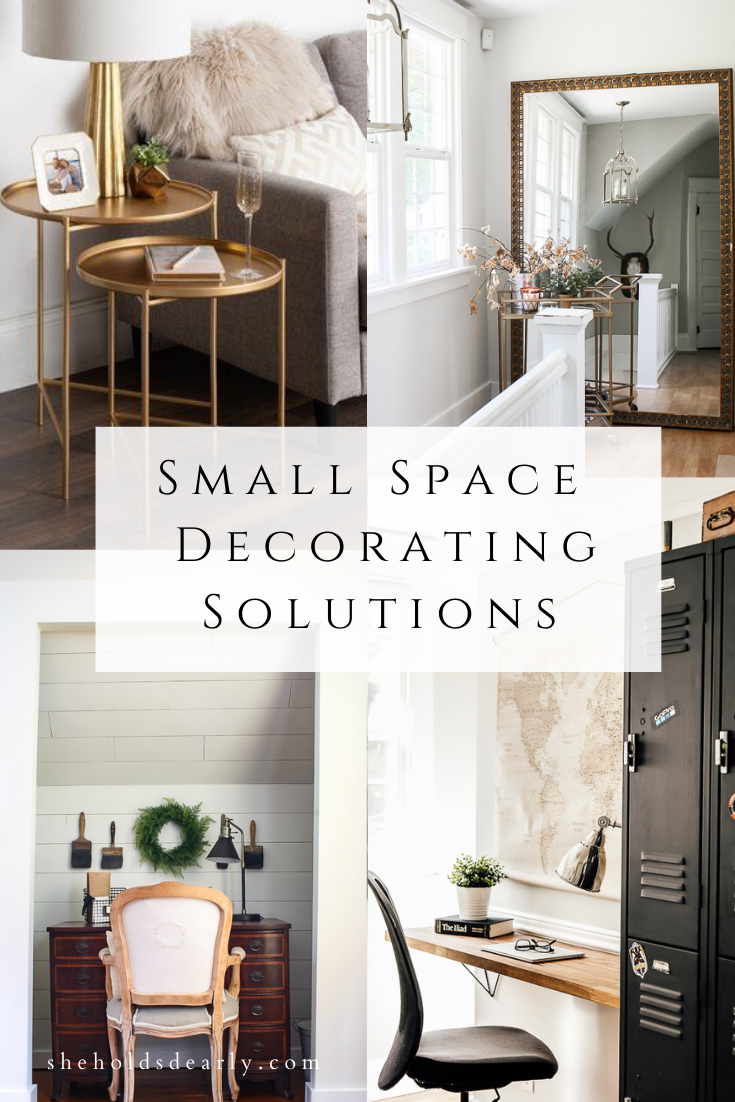
Until next time!